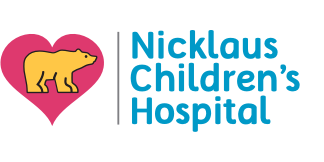- Parents Home
- Para Padres
- Allergy Center
- Asthma Center
- Cancer Center
- Diabetes Center
- Diseases & Conditions
- Doctors & Hospitals
- Emotions & Behavior
- First Aid & Safety
- Flu Center
- Food Allergy Center
- General Health
- Growth & Development
- Heart Health
- Homework Help Center
- Infections
- Newborn Center
- Nutrition & Fitness Center
- Play & Learn Center
- Pregnancy Center
- Q&A
- Recipes
- School & Family Life
- Sports Medicine Center
- Videos
- Kids Home
- Para Niños
- Asthma Center
- Cancer Center
- Diabetes Center
- Feelings
- Getting Help
- Health Problems
- Health Problems of Grown-Ups
- Heart Center
- Homework Center
- How the Body Works
- Illnesses & Injuries
- Kids' Medical Dictionary
- Movies & More
- Nutrition & Fitness Center
- Puberty & Growing Up
- Q&A
- Recipes & Cooking
- Relax & Unwind Center
- Stay Safe Center
- Staying Healthy
- Staying Safe
- Videos
- Teens Home
- Para Adolescentes
- Asthma Center
- Be Your Best Self Center
- Cancer Center
- Diabetes Center
- Diseases & Conditions
- Drugs & Alcohol
- Expert Answers (Q&A)
- Flu Center
- Homework Help Center
- Infections
- Managing Your Medical Care
- Managing Your Weight
- Nutrition & Fitness Center
- Recipes
- Safety & First Aid
- School & Work
- Sports Center
- Stress & Coping Center
- Videos
- Your Body
- Your Mind
A to Z: Migraine
A migraine is a recurring headache that causes intense throbbing in a particular area of the head.
More to Know
Migraines often include symptoms of nausea; dizziness; and sensitivity to light, sound, or smell. Sensory warning signs, called auras, sometimes signal that a migraine is coming on. Most auras are visual disturbances like flashing lights, zig-zag lines, or blind spots.
Migraines can be debilitating, lasting anywhere from hours to several days. Migraines are thought to be related to changes in the brain as well as genetic factors (they tend to run in families). Common migraine triggers include sleep disturbances, stress, diet, and hormonal changes.
Medications can be prescribed to help ease migraine symptoms. Lying down in a quiet, dark place and keeping hydrated can be very helpful.
Keep in Mind
Migraines are common, affecting about 12% of the U.S. population. While they can be disabling, forcing students to miss school and activities, most can be managed with medication and lifestyle changes. The best treatment is, when possible, avoiding triggers that bring on the migraines.
Frequent or severe headaches should be evaluated by a doctor to determine the cause and best treatment plan.
All A to Z dictionary entries are regularly reviewed by KidsHealth medical experts.

© 1995- The Nemours Foundation. KidsHealth® is a registered trademark of The Nemours Foundation. All rights reserved.
Images sourced by The Nemours Foundation and Getty Images.

